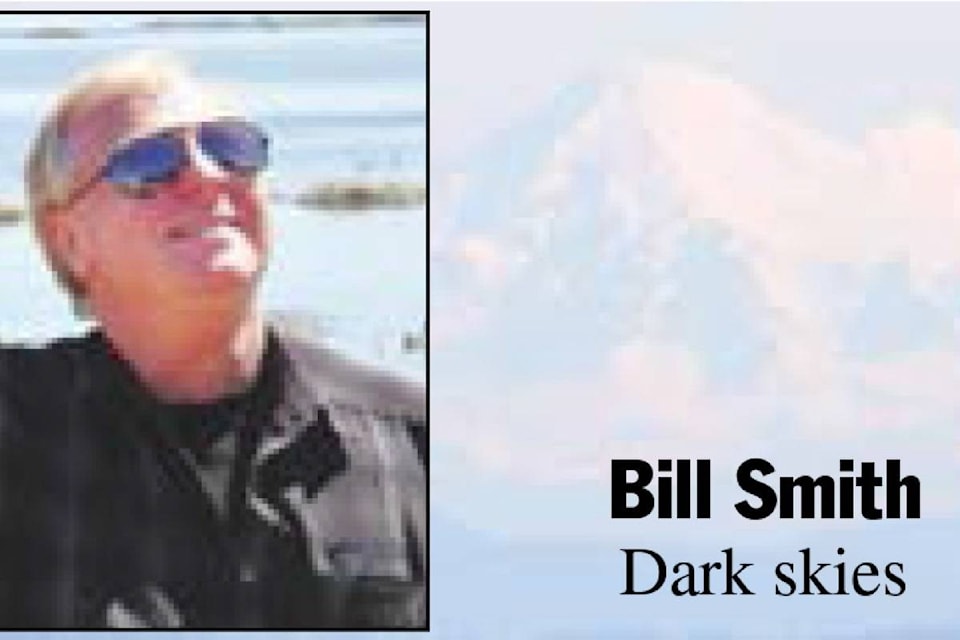What’s Up for August 2018? The summer Perseids are here.
The Perseid meteor shower is the best of the year. It peaks on a moonless summer night – from 9 p.m. on the Aug. 12 to 3 a.m. the next day. Because the new moon falls near the peak night, the days before and after the peak will also provide nice, dark skies. Your best window of observation is from a few hours after twilight until dawn, on the days surrounding the peak. The ideal place to watch is lying on a blanket on the beach at Cattle Point Star Park. Please wrap up well.
Unlike most meteor showers, which have a short peak of high meteor rates, the Perseids have a very broad peak, as Earth takes more than three weeks to plow through the wide trail of cometary dust from comet Swift-Tuttle.
The Perseids appear to radiate from the constellation Perseus, visible in the northern sky over Mount Douglas and Vancouver, soon after sunset this time of year. Observers in mid-northern latitudes will have the best views. You should be able to see some meteors from July 17 to Aug. 24, with the rates increasing during the weeks before Aug. 12 and decreasing after Aug. 13. Observers should be able to see between 60 and 70 per hour at the peak. Remember, you don’t have to look directly at the constellation to see them. You can look anywhere you want to – even directly overhead.
Meteor showers like the Perseids are caused by streams of meteoroids hitting Earth’s atmosphere. The particles were once part of their parent comet – or, in some cases, from an asteroid.
The parade of planets Venus, Jupiter, Saturn and Mars – and the Milky Way continue to grace the evening sky, keeping you and the mosquitoes company while you hunt for meteors. As we have mentioned so many times here in Oak Bay and Victoria, we imagine a wonderful arch from Mount Baker in the east to Metchosin in the west.
We have called it the Salish Walk of the Planets. The planets walk along this arch in 24 hours (plus or minus a “bit” depending upon the planet) - along with the sun and the moon.
So the relative position of the planets on the walk gradually changes by the day relative to the brightest object – the moon.
The rest of the objects in the sky (except for the space station and asteroids) all rotate in 24 hours around the North Star. There are great videos on YouTube showing the relative movement. These videos help you understand why living on a rotating sphere, which is sweeping round the sun, has such a peculiar effect, on what we see up in the sky. It always amazes me how ancient people seem to have a much better sense of the various movements. Perhaps it was due to the darkness of the Earth at night and the bright wonder of the star filled heavens every night - and yes - they had no television and no smartphones.
Summary is from the transcript of “What’s Up in August 2018” by NASA announcer and astronomer Jane Houston Jones with specific permission for localization to Cattle Point Dark Sky Urban Star Park and the Oak Bay News.
